
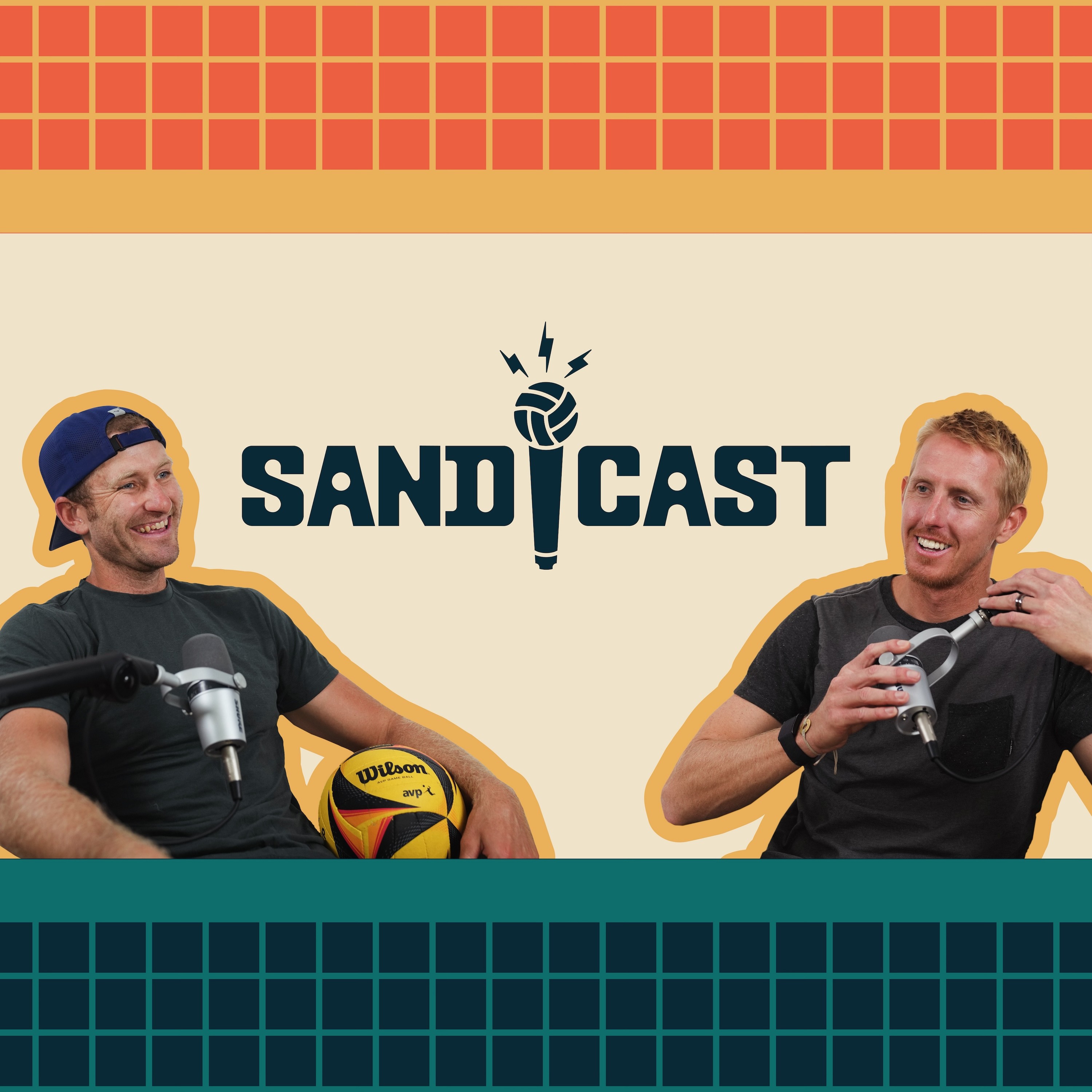
1.1M
Downloads
479
Episodes
SANDCAST is the first and leading beach volleyball podcast in the world. Hosts Tri Bourne and Travis Mewhirter take listeners into the world of the AVP, Volleyball World Beach Pro Tour and any other professional beach volleyball outlets, digging deep into the lives of the players both on and off the court as well as all of the top influencers in the game.
Episodes
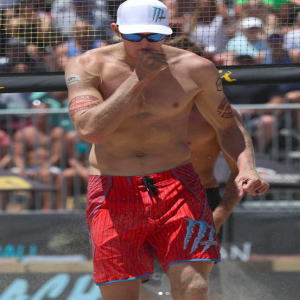
Wednesday May 08, 2019
AVP Huntington recap: Domestic beach volleyball is thriving
Wednesday May 08, 2019
Wednesday May 08, 2019
Let it sink in, if just for a second, that in a tournament where a pair of Sunday regular teams – John Hyden and Ryan Doherty, Reid Priddy and Theo Brunner -- were elsewhere in the world, Phil Dalhausser and Nick Lucena and Taylor Crabb and Jake Gibb were in an elimination match for fifth.
Six of the eight AVP tournaments in 2018 were won by either Dalhausser/Lucena or Gibb/Crabb. And they had to play one another, in the contender’s bracket, on a Saturday evening, for fifth.
Meanwhile, the eight seed – Tri Bourne and Trevor Crabb – had emerged unscathed from the upper half of the winner’s bracket, and the six – Casey Patterson and Chase Budinger – from the bottom half.
Yes, yes, the one seed still won the tournament. In an event in which Crabb and Gibb didn’t really play their finest volleyball until that late Saturday evening, they still emerged victorious. But gone, possibly, are the chalk-walk days of the men’s AVP, where one can safely bet on few upsets, where qualifier teams are dismissed quickly, painlessly, where the mid-tiers are the mid-tiers and the top teams are untouchable.
The same team that won the entire tournament was pushed to three sets in its first match, by qualifiers Kyle Friend and Duncan Budinger. Then they went three, again, with Riley and Maddison McKibbin, and again with Dalhausser and Lucena, and again in a semifinal rematch with Bourne and Crabb.
This was a tournament where the 21 seed – qualifiers Logan Webber and Christian Honer -- beat the 11 – Chase Frishman and Piotr Marciniak – 21-11 in the deciding set, and that 21 then pushed the 14 – the McKibbins – to three.
It was a tournament where Sean Rosenthal, one of the best defenders in United States history, paired with Ricardo Santos, one of the best blockers in the sport’s history, were relegated to the contender’s bracket after a first round loss to Troy Field and Tim Bomgren.
“What kind of a draw is that?” Field said, laughing.
It’s a draw begat from an ever-deepening talent pool, where the older establishment continues to win – “Old man Jake Gibb, still doing it,” Bourne said on SANDCAST: Beach Volleyball with Tri Bourne and Travis Mewhirter – and the younger generation, with the likes of Field, is pushing its way up.
“I’d like to see a year where, unless it’s me, we see a new winner every time,” Bourne said. “We went for a while where it was always Phil or Jake and Casey.”
That era may be gone. It wouldn’t be a surprise to see a record for new winners this year. Same goes, too, for the women’s side, which is seeing its average age of main draw players sink and sink and sink, as 16-year-olds Delaynie Maple and Megan Kraft qualified, along with high schoolers – and USC recruits – Audrey and Nicole Nourse.
“We’re getting to a point where there’s no good draw,” Bourne said. “A few years ago, we were watching blowouts in the finals…the better our domestic tour is, it’s good for the sport. And if the AVP keeps growing, adding more prize money each year, more points, that’ll create enough opportunity for the back of the main draw players to stay afloat, to keep living. That’s the goal.”
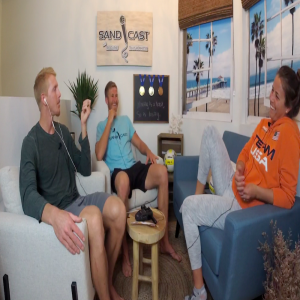
Wednesday Feb 06, 2019
Brooke Sweat: From considering retirement to playing with the GOAT
Wednesday Feb 06, 2019
Wednesday Feb 06, 2019
It’s funny, sometimes, the path the universe can choose to take you. One minute, you’re lying on a training table, your torn shoulder being worked on. You’re pondering if this is it, the last tear. Perhaps it’s time to move back to Florida. Have kids. Raise a family. Move on.
The next, you’re on a call with Kerri Walsh Jennings, the greatest to ever play the game, one of the most dominant athletes not only in the sport of beach volleyball but of all time. She’s looking for a partner, someone to make a run at the Tokyo Olympics. You’ve been to the Olympics before. You fell short, going 0-3. The sting is still there. You want more.
So you take the offer. Your career isn’t over. In fact, this may just be the beginning.
This could be the exact moment everything – the knee surgeries and shoulder tears, moving across the country to a state you never wanted to live to, making a career out of a game that you didn’t pick up until after college – has circuitously led to. Maybe this is the reason for all of that.
Such is the story of Brooke Youngquist Sweat, one filled with tremendous adversity but magnificent toughness, both of the mental and physical sort.
She never meant for beach volleyball to be a career. Her boyfriend in college, Nick Sweat, played. Every now and then she’d hop in. She gave it a go for a bit but didn’t like it much. Wasn’t for her.
Then she tried again. Suddenly, the gal from Estero, Fla., the one who would work on her dad’s rock quarry over the summers, was moving to California. Suddenly she was traveling to AVP qualifiers. And then she was qualifying. And winning.
Suddenly Brooke Sweat had become the very personification of all things Southern California, the one chasing a pipe dream on a beach, dropping everything to do so, traveling with the rolling circus of grinders and hopefuls that is the AVP Tour.
Only it was working.
It was in 2012 that Sweat moved to California. Not coincidentally, a year later, partnered with Jen Fopma at Huntington Beach, she won her first tournament. When she wasn’t winning, she was contending, as Sweat, in 2014 with Fendrick, made five straight finals, meeting the same foil every time: Kerri Walsh Jennings and April Ross.
“I just wanted to be on the court against her, she’s always going to make me better,” Sweat said. “I never thought I would be playing with Kerri. Like, no. So it’s kind of cool to be in this position, especially after not knowing if I was going to be playing ever again.”
So now here she is. Her knee is healthy. Her shoulder, as is Walsh’s notoriously troublesome shoulder, is rebuilt. On the road with them will be physical therapist extraordinaire Chad Beauchamp.
The next two years will be the final push for both Sweat and Walsh Jennings. And then Sweat will return to Florida, where her heart has always been. It will have been a long and winding journey, though what else would you expect from this wonky universe of ours?
What fun would the straight path have been, anyway?
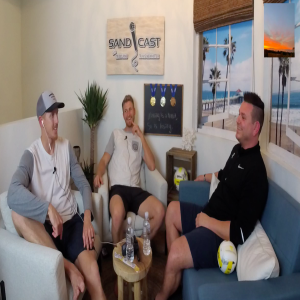
Wednesday Jan 30, 2019
Chad Beauchamp: Not your everyday physical therapist
Wednesday Jan 30, 2019
Wednesday Jan 30, 2019
No matter the country or tournament or prize money on the line, it is never an especially difficult task to identify which is the room of Chad Beauchamp.
It’s the one overflowing with overgrown humans, with massagers, tables, tape, ice.
“Chad has a bed for the athletes, a table, his bed that we’re not supposed to use but most of us sit on it anyway,” Tri Bourne said, laughing on SANDCAST: Beach Volleyball with Tri Bourne and Travis Mewhirter. “We get legitimately excited when we know Chad is traveling with us.”
Beauchamp is, among many roles, one of the physical therapists who travels for USA Beach Volleyball. It’s a position he stumbled into beginning in 2012 with a combination of a phenomenal education, innovative techniques, and, of course, a small dose of serendipity.
“I had been doing some U.S. Surfing stuff,” Beauchamp said. “At that time, I got asked to do a tournament with USA Beach Volleyball.”
They wanted to know if he could go to Germany in a month. He had no idea it was a $300,000 Grand Slam. That it was a critical tune-up for the London Olympics two weeks later.
“I was like, ‘Alright,’” he said, shrugging his shoulders. “I just kind of got thrown in there.”
Now he’s going on seven years with USA Beach Volleyball and is also the trainer tabbed to work with Kerri Walsh Jennings and Brooke Sweat, a pair of athletes with notoriously cranky shoulders.
“This year is going to be cool,” he said. “I plan on going to Moscow with USA Volleyball but this year, specifically, Brooke is coming off her last surgery, it’s been challenging for her the past couple of years, so I’m going to travel a little more specifically with her and Kerri.”
For the past several seasons, Beauchamp has been the man trusted with some of the most valuable shoulders in volleyball, from Casey Patterson and Jake Gibb in their leadup to the 2016 Olympics to Irene Pollock and now to Walsh Jennings and Sweat, who are making the push to Tokyo’s 2020 Games.
“I’ve always looked at rehab and recovery as the glue that holds it all together, all the training and all that kind of stuff,” Beauchamp said, which is why stretching is as important as lifting, massaging as critical as setting, breathing as vital as hitting. “It’s all connected, and sometimes people don’t know, either. You may not even know that if you get a little more range of motion in your t-spine or if you can open up your hips a little more you can jump higher or cock your arm back more and can give you more power. Those are the things we’re looking for. We’re trying to find all of those things.
“If you lack the range of motion in your hips, and you’re not getting the muscles firing in the right sequence, and if you’re not able to twist in your t-spine the right way or engage your core the right way, you’re losing power in your shoulder. And then what you try to do is you try to force it more and that’s when you start to tear your labrum and your rotator cuff and whatever else.”
A conversation with Beauchamp is almost like a lesson in Kinesiology 101 combined with Meditation 101 combined with Weight Training 101, and that’s sort of the point. A visit with Beauchamp won’t result in a simple diagnosis and recovery plan – no more “ice and rest” advice. It will be specific, catered to each individual, an all-encompassing calendar hitting every aspect, from the mental side of things to the strengthening to the recovery.
“Piecing all those components together,” he said, “is how we get the better performance.”
And how his hotel room is the one perpetually overcrowded.
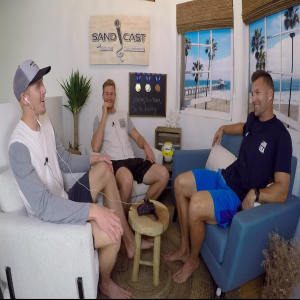
Wednesday Jan 23, 2019
Rich Lambourne: The humble, self-deprecating, sarcastic gold medalist turned coach
Wednesday Jan 23, 2019
Wednesday Jan 23, 2019
The talk always turned to Taylor.
As Taylor Crabb and Jake Gibb grew and developed as a new team, climbing the world ranks, piling up wins that once could have been perceived as upsets – over 2017 World Champs Andre and Evandro, over Phil Dalhausser and Nick Lucena, over Italians and 2016 silver medalists Paolo Nicolai and Daniele Lupo – most looked to Crabb, the 26-year-old quicksilver fast defender, as the reason for that success.
It’s a justifiable stance, and not entirely wrong. But Gibb, appearing on SANDCAST: Beach Volleyball with Tri Bourne and Travis Mewhirter, while giving Crabb his due, also pointed to another source of that success: Rich Lambourne.
“We’ve got a guy with a gold medal around his neck,” he said.
Not that you’ll hear Lambourne mention that gold medal, earned as a libero on the U.S. indoor team in the 2008 Olympics. In nearly an hour on SANDCAST, it came up just once, in passing. The vast majority of his many accolades went unmentioned as well – Best Libero of the World League in 2007, NORCECA Continental Championship 2007 gold medal, being named best libero as the U.S. won their first World League title in 2008, the fact that he played in every set of the Beijing Olympics in which the Americans won gold.
No, that just wouldn’t be Lambourne, a paragon of humility, self-deprecation and sarcasm. A struggle of many players-turned-coaches is turning off the player inside them, one that Brazilian Jose Loiola admitted he struggled with. Lambourne laughed. He had no such struggle.
“What’s been interesting to me, it’s been a huge and ongoing learning process for me because I don’t have personal, professional frame of reference to the game,” Lambourne said. “Jose has 20 years of repetitions and tournaments that he went through in this particular discipline of the sport, and I don’t. I have, I think, some technical expertise that has some high degree of transfer that I can bring, but the rest of it – strategy, how can we accomplish getting that team out of system, or how can we accomplish putting them in positions we want them to be in that are advantageous for us, it’s vastly different outside than it is inside. So all that stuff is stuff I had to learn, stuff that I’m still learning, that’s still evolving.
“So that’s been the challenging, and what’s been fun.”
They’ve created a collaborative dynamic, Lambourne, Gibb and Crabb, begat from three vastly different perspectives on the game. Lambourne is the indoor specialist with a sharp mind for the game. Gibb is one of the all-time greats, a three-time Olympian with a likelihood of making that four. Crabb has set himself firmly in the conversation as one of the best defenders in the world.
“I try to bring what I have to them, and they try and fill in the gaps with, in Jake’s case, 20 years of experience at the highest level,” Lambourne said. “And in Taylor’s relatively short career, how much amazing stuff has he done? So I’m never going ‘Uh, no, let’s do this.’ I’m saying ‘Here’s what I think, here’s what you think, so let’s decide so we’re all on the same page.’”
That same page, at the moment, has put Crabb and Gibb as arguably the best team in the United States. It's put them on track for Lambourne to appear in his third Olympics, Gibb his fourth, Crabb his third. Just don't expect Lambourne to take much, if any, credit.
"No, I take full credit for Taylor's success," Lambourne said, laughing.
So there it is, the only type of credit Lambourne will take: the sarcastic type, full of self-deprecation, and nothing about the gold medal hanging from his neck.

Wednesday Jan 16, 2019
Carly Wopat: Transitioning from indoor's highest level to beach's
Wednesday Jan 16, 2019
Wednesday Jan 16, 2019
Carly Wopat acknowledges that there are a number of skills that need to be refined, so be smoothed over, to be fully beached from their indoor counterparts. But she’s been an athlete all her life, a state champ in high school, an All-American at Stanford, a professional overseas. It’s simply a matter of time for most, and anyway, the majority of the fundamental skills are already there. There’s just one that gives her pause: setting, and hand setting.
“Initially I just wasn’t squaring up,” she said on SANDCAST: Beach Volleyball with Tri Bourne and Travis Mewhirter. “It took a long time for me to just square up every time. I kept trying to angle the sets. I’m starting to get good at squaring up but I want to get better at hand setting and that’s the most difficult thing for me right now: hand setting.
“The indoor hands are so different from the beach hands. I’ve gotten to the point where I know how to set a good ball, what it feels like, I just need to be able to do it consistently.”
Anyone who might doubt Wopat’s ability to do so likely just doesn’t know much about Carly Wopat.
This is a 26-year-old who, as a senior in high school, led Dos Pueblos to a CIF title and followed it up by setting a school record in the discus.
This is a girl who, while majoring in human biology and dabbling with a minor in art at the most prestigious university in the country, led the Pac-12 in blocks per set (1.43) and hit .392 for her career, good for second all-time at Stanford.
This is a girl who taught herself to play guitar, who speaks French and can also drop the occasional Turkish – “I don’t know why, but it just stuck with me,” she said – and Japanese. This is the daughter of a man who nearly qualified for the 1980 Olympics in track and field and a mother who competed as a gymnast in college.
And hand setting could potentially be an issue? No way.
In fact, it is the very difficulty of the sport, the fact that one couldn’t simply be a decent athlete and succeed, that drew her to volleyball in the first place. It is the need for these reps, the proverbial 10,000 hours, that she loves the most.
“I like the speed of it,” she said of volleyball. “It’s an interesting sport. It takes a lot of skill. There are some sports where you can be really athletic and just go out and be really good at, like you can run and go be a track athlete or something like that. But with volleyball, there’s so much skill involved that it takes years and years to cultivate just hand-eye coordination and the feel for the ball. Just things that only come with experience I guess, perspective of the court and so I really liked that part of the game, that I could work on these skills and be really athletic and go out and play this game.”
And in limited experience on the beach, she has already excelled, making two main draws – in San Jose and Huntington Beach – to end the 2018 season, taking fifth at p1440 Huntington Beach alongside Corinne Quiggle. With those resume points, despite zero FIVB points to her name but the desire to play overseas, she got a call from one of the most experienced United States defenders, Brittany Hochevar.
“Hochevar messaged me while I was still playing in the p1440s and asked if I wanted to meet up,” Wopat recalled. “I think she had done her research and watched me a little bit and maybe talked to some people, so we met up and discussed playing together, and she just kinda has this dream to go to the Olympics for 2020 and we talked a lot about timing, and our partnership – I don’t know, just the timing of it all just works out really well.
“The more I’ve gotten to know her spirit and energy – she’s just an amazing person. I just think we’re going to make an amazing partnership.”
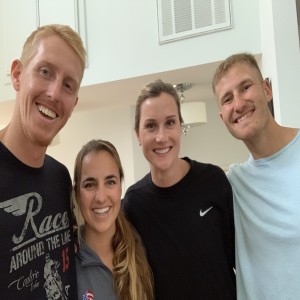
Wednesday Jan 09, 2019
SNOWCAST: Emily Hartong and Katie Spieler
Wednesday Jan 09, 2019
Wednesday Jan 09, 2019
There they stood, the four Americans, bundled in four to five layers of UnderArmour and other form-fitting warm weather gear. Bundled in beanies and gloves, headbands and, underneath it all, hand and feet warmers tucked in their makeshift soccer cleats and gloves.
They – Emily Hartong, Katie Spieler, Karissa Cook, Allie Wheeler – had descended upon Moscow, Russia less than a week before Christmas to play volleyball. It does not take an astrophysics major or scientist or really anybody with exceptional intelligence to determine that this was not the typical volleyball tournament. It wasn’t on a beach, where they are all pursuing careers. No, this was on snow, not a surface befitting three who earned degrees from the University of Hawai’i and another from USC.
“We were compared to the Jamaican bobsled team,” Spieler said, laughing, on SANDCAST: Beach Volleyball with Tri Bourne and Travis Mewhirter. In a way, the comparison fits. Few would expect Americans to specialize in a sport that is legitimately never played on U.S. soil, aside from a lone exhibition at Mammoth Mountain in 2017. And yet, the comparison doesn’t really fit at all, for while the famed Jamaican bobsled team, which made their Olympic debut in 1988 and is the subject of the wonderfully popular film, Cool Runnings, was more of a gimmick, failing to finish their qualifying run, the Americans ran the table.
Five straight matches they won, closing with a three-set win over Russia in the finals.
“It was crazy,” Spieler said. “Definitely the best team we played was that Russian team we played in the finals. They were scouting us for at least an hour, with their coach, in the V.I.P. tent, so intense. Karissa had to go back to the tent to grab her bookbag and they went silent, like ‘Whoa.’ We were so confused at what they were scouting because we just had no idea what we were doing on the court. We were just kinda going for it out there.”
It doesn’t really matter what surface it is for Spieler. She has won on the beach, as she did at Seaside, one of the biggest non-AVP or p1440 domestic events of the season, this year alongside Cook. She has won on dirt, as she did with Cook at a NORCECA in Martinique. And now she’s done so in the snow, though with a bit different of a wardrobe.
“Hand warmers were super key,” Spieler said, to which Hartong agreed, mentioning she had two in her shoes.
“All in the toes,” she said, laughing. “Arch was fine. It was all really interesting. It was fun, though. It was so much fun.”
Hartong, too, has enjoyed success at every level, and now on every surface. She won a state title at Los Alamitos High School, was a two-time Big West Player of the Year at Hawai’i, named the Best Foreign Player on her pro team in Korea, qualified for the Hermosa and Manhattan Opens in her first year on the AVP, and is now a gold medalist on the snow.
“We had a really good time, laughing on and off the court,” Hartong said. “I wouldn’t be surprised if it does become a sport.”
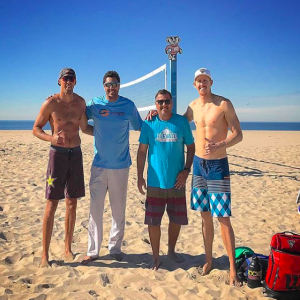
Wednesday Jan 02, 2019
Tri Bourne, Trevor Crabb: Making the split-blocking push to Tokyo
Wednesday Jan 02, 2019
Wednesday Jan 02, 2019
It began as something fun. Nothing much more than, well, why not? Why not put two childhood friends on the same team? Friends who play the same side, the same position, who had never played defense at a professional level.
And yet there Tri Bourne and Trevor Crabb were, winning in Manhattan Beach, finishing with a seventh. Winning in Chicago, improving to fifth. Winning in China, claiming a gold medal. Winning in Hawaii, making a Sunday. Winning in Las Vegas, nearly stunning Russia’s top team, Viacheslav Krasilnikov and Oleg Stoyanovskiy, for a bronze medal. Winning despite Bourne not having played for nearly two years. Winning despite Bourne tweaking a rib. Winning despite neither of them really having any clue what to do on defense at the game’s highest level. Winning despite neither having played much right side in their careers.
And now here we are, in 2019, with the Olympic race beginning in earnest this week at The Hague, and Bourne and Crabb, the team that few, even themselves, predicted to be legitimate contenders, or even a team at all, are training full-time, pushing for a berth to Tokyo in 2020.
“We’re gonna stick with our plan,” Bourne said on SANDCAST: Beach Volleyball with Tri Bourne and Travis Mewhirter. “We’re still a new partnership, obviously. Last time we played in 2018 it was a honeymoon phase, even though me and Trevor have been playing against each other our whole lives. We had a lot to figure out, were just winging it at the end of 2018, so now we gotta figure out what our system is, figure out how the hell to play defense, and so I’m excited.”
The commitment establishes Bourne and Crabb as the only split-blocking team in the U.S., and one of the few in the world at the game’s highest level. Currently, Spain’s Pablo Herrera and Adrian Gavira, Latvia’s Janis Smedins and Aleksandrs Samoilovs and Brazil’s Evandro Goncalves and Andre Loyola are the handful who have been able to succeed with neither partner specializing in either defensive position.
“You just feel like you should specialize because the rest of the world is,” Bourne said. “I’m super excited about it. I’ve always taken a lot of pride in being able to do every skill. Indoors, I played libero a little bit at USC, played middle blocker, so I’ve taken a little skill set from each position indoors and that’s what’s developed me for beach. I didn’t like being a specialized blocker even though it’s my favorite skill and the one I probably took the most pride in the last five years.
“But now I get to do it all. I’m stoked on that.”
He knows there’s going to be a learning curve, that their quick success was perhaps aided by the unconventional style and the lack of preparation teams could do against them. Which is why the Olympic race is not a sprint, but a two-year international grind, one Bourne and Crabb are now set on doing together.
“At the end of the year, we both took some time, and we weren’t for sure going to play with each other, we took time to figure out what was best for ourselves individually, but we both kind of came around – this is too fun,” Bourne said. “Why not, you know?”
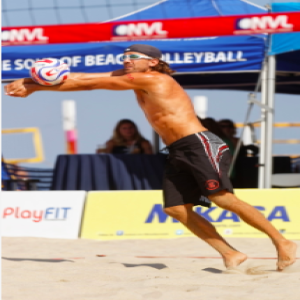
Wednesday Dec 26, 2018
Jon Mesko: Thinking deeper and celebrating Festivus
Wednesday Dec 26, 2018
Wednesday Dec 26, 2018
Jon Mesko sincerely hopes you had a merry Christmas. He really does. He’s no Scrooge or Grinch. But there’s another holiday he loves, a “Festivus for the rest of us!”
Those not indoctrinated with the classic Seinfeld episode, allow Frank Castanza, father of George Castanza, explain.
“At the Festivus dinner, you gather your family around, and tell them all the ways they have disappointed you.”
“Is there a tree?”
“No, but there’s a pole. No decorations. I find tinsel distracting.”
“Festivus is back!” Frank declares in the episode that aired on Dec. 18, 1997. He couldn’t have possibly realized that, indeed, 21 years later, it would be back, at Mesko’s new – and popular amongst the beach volleyball crowd – restaurant, Serve on Second.
But does Mesko have any grievances to air? Any long held grudges with the beach volleyball community?
“I’m here to air the grievances for Festivus,” he said, grinning, on SANDCAST: Beach Volleyball with Tri Bourne and Travis Mewhirter. “I got a lot of problems with you people and now you’re going to hear about it.”
He said this with a smile, one that suggests he was half-joking, half-serious. If you’ve messed with his nets, or his courts, or his cables, well, you might be getting a grievance from Mesko, who is so particular about the heights of his nets – formerly located on eighth street in Hermosa, now on 35th – that, prior to this year’s Manhattan Beach Open, he went out on center court, measured it, and – aha! He knew it! – the net was an inch low.
“The AVP has historically put it an inch and a half low, and the FIVB has put it an inch to an inch and a half high,” he said. “So what I decided was, ‘I’m going to walk out to the Manhattan Open final, right before Nick and Phil played Jake and Taylor,’ and it was one inch low, and that’s what the AVP sets it at, and that’s fine, so that’s what I set my net at now. I want to play what AVP, domestic tournaments are playing at.”
It is, among other enviable traits, this borderline OCD attention to detail that has allowed Mesko to be so successful in so many endeavors, and in risky fields – beach volleyball, the restaurant business – too.
“I enjoy just kind of making things a little bit better and improving things,” he said. “When I arrived at eighth street, it was pretty much just Rosie’s Raiders, hanging out and drinking, and I put out a new net and cables, putting down lines, and people just strted showing up to play. It culminated one day in 2012 with Brink and Reckermann and Jake and Rosie and the Russians and New Zealand and China and it was everybody. I just stood back and looked at it and thought it was pretty fun to watch. People just hung out after practice on my porch.”
Ah, yes, Mesko’s porch. If you’re in beach volleyball, you have likely hopped the Strand wall in Hermosa Beach and hung out on Mesko’s porch, either talking volley, losing money in backgammon, betting on something or other, perhaps measuring your height on the once-famed wall, which has since been torn down with his old place on eighth. The wall grew so famous, in fact, it had its own spread in DiG Magazine.
“The most amusing part for me was watching people tell Adam [Roberts] what they thought their height was and then seeing their real height,” he said. “Almost everybody was about an inch high except for Phil [Dalhausser], who said ‘I’m 6-9’ and, yeah, he was 6-9.”
The wall. The backgammon. The porch. The set up. The constant, top-tier talent, both international and domestic, practicing on his courts. Not bad for a guy from Michigan who hadn’t played much beach volleyball prior to moving to California in 2002 and qualifying, for the first time, in 2006, seeded Q60 with Billy Allen.
Since, he has played in more than 100 domestic tournaments, won the NVL Soul Award, enjoyed some NORCECA – don’t ask him about the net height in NORCECAs – success and built not one but two unofficial training centers, where players gravitate towards his courts like moths to a flame.
“I’ve always been kind of a bigger picture, swing for the fences, shoot for the stars kind of guy, so I really try to ask the right questions,” Mesko said. “If you really want to play high level volleyball, you’re going to end up in the South Bay or Rio or Southeast Florida. That’s where you’re going to end up.
“So at that time, 15 years ago, I was interested in girls and bikinis and playing really good volleyball and everything in between. That was Hermosa Beach. And I started looking around and thought it would be really cool to live on the Strand, so I started asking questions, ‘Well, what does it take?’ And a guy said ‘It’s going to cost $5 million dollars, minimum’ and I used that as a bar, ‘What would it take for me to make that much money?’ And I used that algorithm to maybe get there. I suppose we’re there now.”
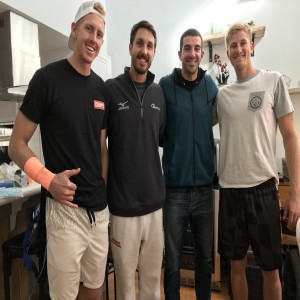
Tuesday Dec 18, 2018
Billy Kolinske and Miles Evans: Climbing the world rankings by going all in
Tuesday Dec 18, 2018
Tuesday Dec 18, 2018
Bill Kolinske won’t forget looking at the hill, the one with his car parked at the top. Earlier that morning, he had parked there for his first beach volleyball tournament, and he did what he had always done for all of his grass tournaments: He lugged a cooler packed of food and drinks for the day. At the earliest, he’d be finished by one in the afternoon, maybe, if the day went well, 5 p.m.
But this wasn’t grass. It was beach. And when Kolinske got spanked by a couple of guys in their mid-40s, his day was over by 9:15.
“I remember I lost, and I was so pissed, and I’m like ‘I’m not lugging this thing all the way back up,’” Kolinske recalled on SANDCAST: Beach Volleyball with Tri Bourne and Travis Mewhirter. “I’m at least eating a sandwich. I remember that day, I lugged that cooler all the way back up, and I’m like ‘I’m figuring out how to play this game.’”
He has since figured it out quite well. In 2016, just his third year playing multiple AVPs, Kolinske logged four top-10 finishes, including a third in New York with Avery Drost. This past year, he took to the FIVB full-time for the first time, making a $10,000 commitment at the start of the season, beginning a circuitous year with Miles Evans that took them from Morocco to China, Sydney to Iran, Lucerne to the Czech Republic.
And, yes, it also took them to France and the Eiffel Tower. Just, uh, well, don’t bring that one up.
“It was our second FIVB, which we didn’t actually end up playing,” Evans said, smiling ruefully. “Bill booked the flight, $2,000 bucks, probably could have been about $400. So we go down there, and it’s the first time that there’s a qualifier for a one star, so they have a 12 page document, and on the sixth page it says there’s a players meeting that we need to attend, and there’s never been a players meeting before. So we miss the players meeting, and we tell them 10 minutes after it ends that we’re there. We told them a week before that we’d be there, and they don’t let us into the tournament.”
As it can sometimes go with international tournaments. Sometimes your bag gets delayed when playing in Morocco and you have to play in some hideous board shorts just to get something that matches. Sometimes you win a silver and a bronze medal in the Netherlands and Australia and still come away down more than $1,000.
Such is the nature of the beach volleyball ladder: You invest $10,000. You get your finishes. You build your points.
Now Evans and Kolinske are in four-star main draws, their first being at The Hague after the New Year. Now they’re one of the top teams in the United States. Now they’re playing against the best in the world, and holding their own when they do so.
“It’s been an interesting year for us,” Kolinske said. “We’ve been playing tournaments these last 14 months pretty consistently, which I like playing year-round. I think it’s worked out well for us.”
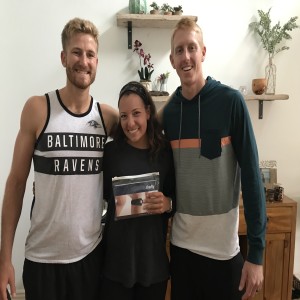
Wednesday Dec 12, 2018
Molly Turner: Following the perfectly unorthodox path to success
Wednesday Dec 12, 2018
Wednesday Dec 12, 2018
It’s difficult to blame Grand Canyon beach volleyball coach Kristen Rohr for forgetting. That when she looked around at her group of players, the one that began the 2018 season ranked No. 10 in the country, and said how they had chosen every one of them to come there, she forgot about Molly Turner.
“I was like, ‘Not me,’” Turner said, laughing, on SANDCAST: Beach Volleyball with Tri Bourne and Travis Mewhirter. “I was the only one that wasn’t chosen by any of the coaches.”
Coming out of a small club in Naperville, Illinois, a suburb west of Chicago, Turner wasn’t specifically chosen by any college program.
Her first choice was more of a blanket choice: Any school in California would do. So she sent out emails to “every single school I could,” she said, naming, specifically, USC and Long Beach State. She didn’t hear back. So she tried the neighboring states, finding Grand Canyon University, a school in Phoenix with an enrollment of just more than 20,000.
“I’ll pretty much do anything to be on your team,” she recalled writing the coach in an email. “She said ‘I can’t really guarantee anything’ so I went and took a risk. I kind of went for volleyball even though I didn’t really have a spot yet but I got invited to walk on and I just kept playing.”
And playing quite well, quite fast. A 5-9 freshman season preceded an 18-8 sophomore campaign, one that began with an 8-match win streak. Then came a junior season in which Turner and Tjasa Kotnik won 22 matches to just three losses, culminating in All-American honors.
“Honestly the only difference between my freshman, sophomore and junior seasons was that I moved to San Diego over the summer and trained there,” Turner said. “So maybe that was it.”
Not that everyone noticed.
“One time we went to practice at GCU and there were some people on the courts, and we had our jerseys on and asked them to leave so we could practice, and they were like ‘Well, who are you with?’” Turner said, laughing, per usual. “‘We’re the beach volleyball team.’ It was small when I originally got there but it’s grown so much.”
As has Turner. To the point that, rest assured, after a sensational rookie season, one directly succeeded by her senior year at GCU, there is no more forgetting about Molly Turner.
After losing early in qualifiers in Austin and New York City – granted, she had to play against then-top-ranked Canadians Melissa Humana-Paredes and Sarah Pavan in New York – Turner qualified in Seattle, San Francisco, Hermosa and Chicago.
Three weeks after finishing 13th in her hometown, she played her first international tournament, a NORCECA alongside Falyn Fanoimoana, winning gold over UCLA’s Megan and Nicole McNamara.
“I like the path I went through,” Turner said. “It was pretty tough, and it still is kinda tough.”
Indeed. Turner still works three jobs. She trains four to five times a week to go along with conditioning and weight lifting. She’s learning how to recover. Not the most orthodox of systems, but then again, when has Turner’s path – cut from her indoor team, ignored by most every college aside from GCU, moving to San Diego on her own, to California for the AVP while working three jobs – has been orthodox, anyway?
“I don’t want to stop,” she said. “I just enjoy it so much.”